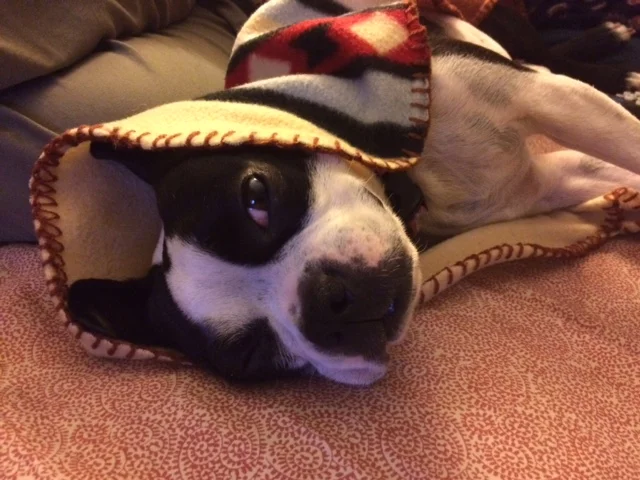Where would our world be without structure?
We all need some kind of physical or psychic framework. It could be something as basic as the ground beneath our feet or as abstract and etherial as a life’s purpose.
Our Boston terrier, Lilly, loves the feel of grass beneath her paws (and her belly and back as she wriggles through the neighborhood “pee-mail”), though I seriously doubt that she writhes in existential angst.
Still, even beings unencumbered by human psychology - and the emotional make-up of the Real Housewives of Orange County - need to feel as though they are part of a larger network, have something to do and a secure place in which to do it.
From what my wife, Susan, and I learned, Lilly came to us from a “home” in which her place in the “pack” was, at best, unsettled. She was given as a “gift” from a backyard breeder to a family that already had two established pooches. Lilly was the newbie, the interloper competing for affection and resources.
Evidently, the family’s capacity for love (and limit-setting) was confined to the “old-guard” pets. No one took responsibility for potty-training and socializing Lilly. She was kept outdoors and slept inside a dog house because she “made poopy in the house.” Lilly still has callouses on her stubby tail from sleeping on bare, weathered wood night after night.
Lilly became an afterthought, but she would not continue to be one.
We did not adopt Lilly in spite of her history, but because of it. Just as Susan and I were drawn together because each of us glimpsed in the other a sense of perseverance in the face of adversity, so we saw in Lilly a sweet soul who survived heartless neglect. She just needed a solid foundation - a structure - within which to become the best doggie she could be.
Before she came to us, nine-month-old Lilly had never walked on a leash. Within ten minutes after we first put a leash on her and guided her with treats and gentle praise, she morphed from timid “toddler” to confident canine exploring her “hood.” After three weeks, the pup who never played flipped her stuffed caterpillar into the air and pounced on it with glee. Where she once spiraled into a tirade when another dog appeared on the horizon, she now romps and tumbles with several dog friends. Perhaps most important, Lilly is now able to calm herself for stretches of time when Susan and I are not around.
What Lilly missed in her first, crucial months of development was a family loving enough to create the structure within which she could blossom. Susan and I feel blessed and honored to have provided her with what she needed. In fact, our ability to create - and appreciate - structure in our own lives has grown exponentially since Lilly became our doggie daughter. Having devoted ourselves to her, both Susan and I have in turn devoted ourselves to becoming better friends, professionals and citizens-at-large by making a plan - and taking the time.
Lilly’s first family did not take the time. Too many families that acquire pets don’t think about the structure - or lack thereof - in their own lives, let alone the structure needed for a pet to thrive.
Some people just want their pets to serve as a mirror, unconditionally reflecting their own greatness back to them.
Until one day when that reflection comes to disgust them and they simply break the mirror - or throw it away.

